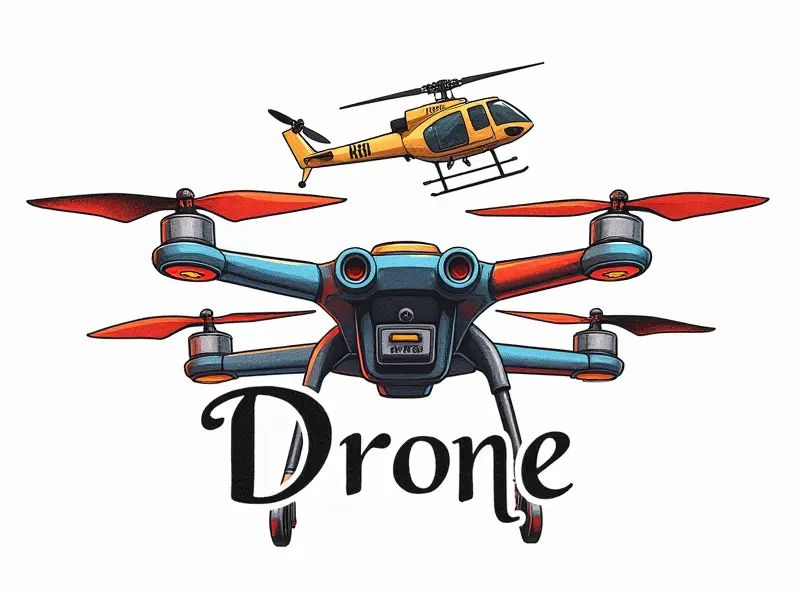How to fly an FPV drone?

How to Fly an FPV Drone: A Comprehensive Guide
Mastering FPV Drone Flight Basics
Flying a first-person view (FPV) drone is an exhilarating experience that combines the thrill of aerial acrobatics with cutting-edge technology. Before you take off, it's crucial to understand the basics of FPV drone flight.
Understanding FPV Technology
- First-Person View (FPV): This immersive experience allows pilots to see what their drone sees through a video feed transmitted from an onboard camera. Commonly used for racing, aerial photography, and videography.
- Radio Control: FPV drones are controlled via radio signals sent from the ground station's transmitter to the drone’s receiver.
Choosing the Right Equipment
- Drones: Select a drone that suits your skill level and intended use. For beginners, consider starter kits or drones designed for learning.
- Goggles: High-quality FPV goggles are essential for an immersive flight experience. Look for models with built-in DVRs and adjustable lenses.
- Transmitters: Choose a transmitter that offers reliable signal strength, comfortable ergonomics, and multiple frequency options.
Beginner's Guide to Flying FPV Drones
Getting started with FPV drone flying can be daunting. Follow these steps to ensure you have a smooth transition from novice to pro.
Familiarize Yourself with Controls
- Yaw: Rotates the drone left or right around its vertical axis.
- Pitch: Tilts the drone forward or backward, affecting altitude and speed.
- Roll: Tilt the drone side-to-side for lateral movement.
Safety First
- Inspect Your Drone: Before each flight, check your drone’s propellers, battery connections, and any other components that could malfunction.
- Fly in Safe Areas: Choose an open field or designated FPV flying zone to avoid obstacles and legal issues.
Top Tips for FPV Drone Piloting
To enhance your FPV drone piloting skills, here are some top tips that will help you become a more proficient pilot:
Practice Makes Perfect
- Start Slowly: Begin with simple maneuvers and gradually increase difficulty as you gain confidence.
- Fly Regularly: Consistent practice is key to mastering the nuances of FPV drone piloting.
Stay Calm Under Pressure
- Breathe Deeply: Maintain composure during stressful moments, such as when your drone gets lost or encounters obstacles.
- Plan Ahead: Anticipate potential challenges and devise strategies to overcome them before they occur.
Essential Skills for FPV Drone Flying
Mastery of certain skills is crucial for becoming an expert FPV drone pilot. Here are some key abilities you should focus on developing:
Advanced Maneuvers
- Circle Flight: Learn to fly your drone in tight circles, which is essential for aerial photography and racing.
- Spiral Climb: Master the art of climbing vertically while maintaining control over altitude and speed.
Navigational Skills
- Obstacle Avoidance: Develop keen spatial awareness to navigate through challenging environments without crashing.
- GPS Locking: Utilize GPS features for precise positioning and return-to-home functionality.
FPV Drone Flying 101: The Ultimate Guide
This ultimate guide covers everything you need to know about FPV drone flying, from setup to advanced techniques. Follow these steps to become a proficient pilot:
Setup and Configuration
- Install Firmware Updates: Keep your drone’s firmware up-to-date for optimal performance.
- Tune Your Radio System: Ensure reliable communication between the transmitter and receiver by adjusting settings such as frequency bands and power output.
Flying Techniques
- Hovering: Practice maintaining a steady hover in mid-air to improve your drone's stability control.
- Landing Safely: Develop smooth landing techniques that minimize the risk of damage or injury.
Quick Start Guide to FPV Drone Flight
This quick start guide provides a concise overview of how to get started with FPV drone flying. Follow these steps for an efficient and effective learning process:
Step-by-Step Instructions
- Assemble Your Gear: Ensure all components are properly connected and functioning.
- Calibrate Sensors: Calibrate your drone's sensors, including compass, accelerometer, and gyroscope.
- Fly in a Controlled Environment: Start by flying indoors or in an open field to minimize risks.
Become an Expert in FPV Drone Control
To achieve mastery over your FPV drone, you need to continually challenge yourself and refine your skills. Here are some ways to take your piloting abilities to the next level:
Participate in Competitions
- Racing Events: Join local or online racing events to test your speed and agility against other pilots.
- Creative Challenges: Engage in creative challenges that push you out of your comfort zone, such as aerial photography contests or freestyle flying competitions.
Continuous Learning
- Follow Forums and Communities: Stay up-to-date with the latest trends and technologies by joining FPV drone forums and social media groups.
- Watch Tutorials: Learn from experienced pilots through video tutorials, webinars, and online courses.
Learn FPV Drone Controls Effortlessly
Making the transition to advanced controls can be challenging. However, by breaking down complex maneuvers into manageable steps, you can learn effectively:
Simplify Complex Maneuvers
- Break Down Steps: Break down each maneuver into smaller components and practice them individually before combining.
- Use Visual Aids: Utilize visual aids such as diagrams, videos, and animations to better understand the mechanics of advanced maneuvers.
Increase Sensitivity Gradually
- Start with Low Settings: Begin practicing new controls at low sensitivity levels before gradually increasing difficulty.
- Practice Regularly: Consistent practice is key to mastering advanced control settings and maneuvers.
Increase Sensitivity Gradually
To improve your FPV drone piloting skills, it's important to increase sensitivity gradually. This allows you to adapt more effectively to changes in the environment while maintaining precise control:
Start with Low Settings
- Begin at Minimal Sensitivity: Start by setting your controls to minimal sensitivity and practice basic maneuvers.
- Increase Gradually: Slowly increase sensitivity levels as you become more comfortable with advanced maneuvers.
Maintain Control Over Altitude and Speed
- Practice Hovering Techniques: Focus on maintaining a steady hover in mid-air to improve your drone's stability control.
- Landing Safely: Develop smooth landing techniques that minimize the risk of damage or injury.

